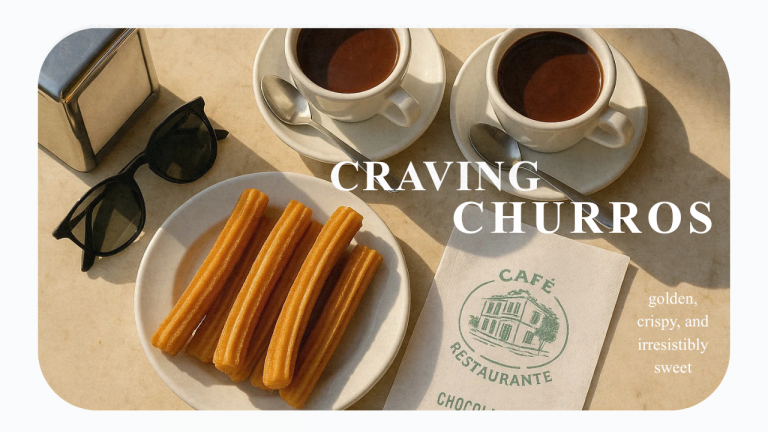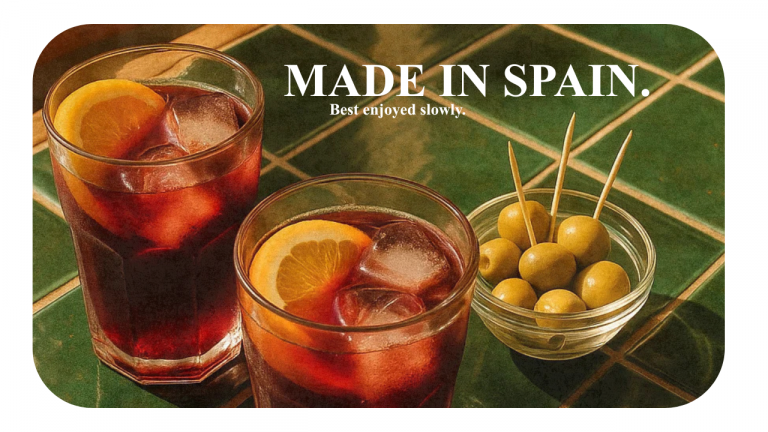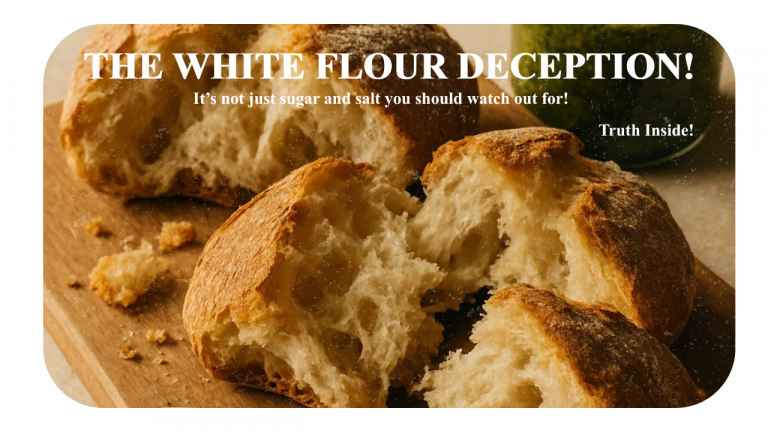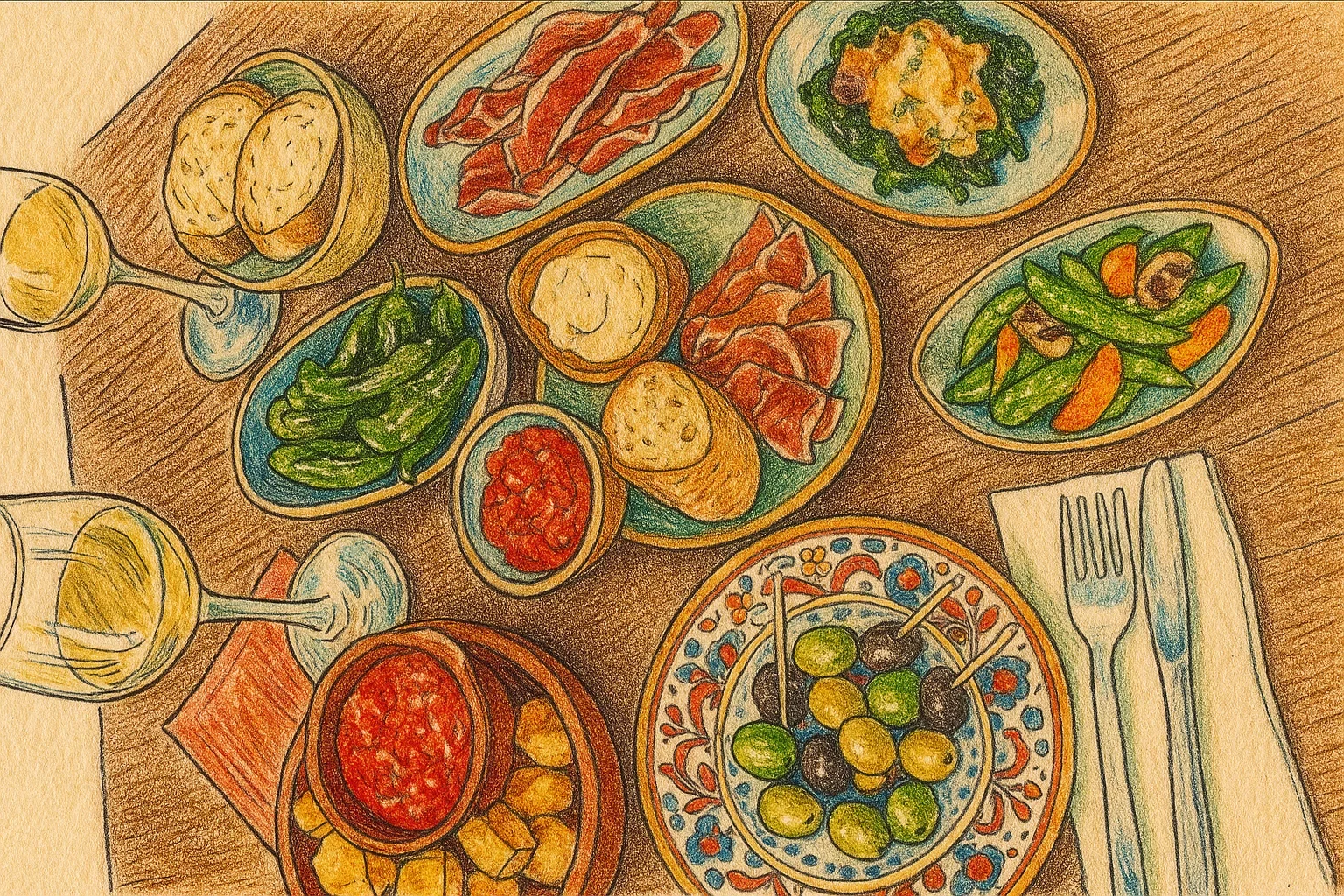
When I moved to Spain from my small home country, I thought I would be more excited about the Spanish art, architecture, and beaches. I didn’t have many expectations for the food. I certainly didn’t expect my first “wow” moment to come from something as simple as a supermarket olive. 🫒 I took one bite and gasped – it was nothing like the olives I’d known before. That tiny jar sparked a curiosity for Spanish products and fresh produce I never knew I had. And, in a way, that one little olive is the reason I’m here, writing this blog.
That curiosity led me to try other Spanish staples – cheeses, meats, fresh seafood…but the one thing I kept coming across, no matter where I went, was the famous Spanish tapas.
At the beginning, I didn’t understand the culture behind it. I thought it was totally unnecessary for “little plates” to have their name. But when I started looking into 📜 the history of tapas, it caught my attention. There are a few theories about how tapas came to be.
📜 The word tapa means “lid” or “cover.” One popular theory traces tapas back to 13th-century Andalusia, where bartenders covered wine glasses with a small plate, or tapa, to keep flies out. Over time, they began placing small bites of food on these plates, and the tradition of tapas was born.
📜 I also found the “Royal Sea Breeze” theory interesting: it’s said that King Alfonso XIII visited Cádiz, a coastal city in Andalusia, where a strong wind blew sand everywhere. A clever bartender covered the king’s sherry with a slice of ham to protect it, and the king liked it so much he ordered another “with the cover.”
📜 In rural Spain, laborers often had small bites of food between work to keep their energy up — usually bread, olives, or cheese. Over time, eating small portions alongside drinks gradually evolved into a social custom.
Tapas may have started as a clever way to keep wine clean and drinkers happy, but today they’re all about connection. In Spain, tapas are a reason to slow down, share plates, hop from bar to bar, and enjoy both the food and the company. I learned that tapas are not just about eating food; it’s about socializing. Tapas aren’t a type of food either, but a way of eating – casual, shared, and unhurried. After getting free tapas in Granada with every drink, I finally started to understand the joy of it.
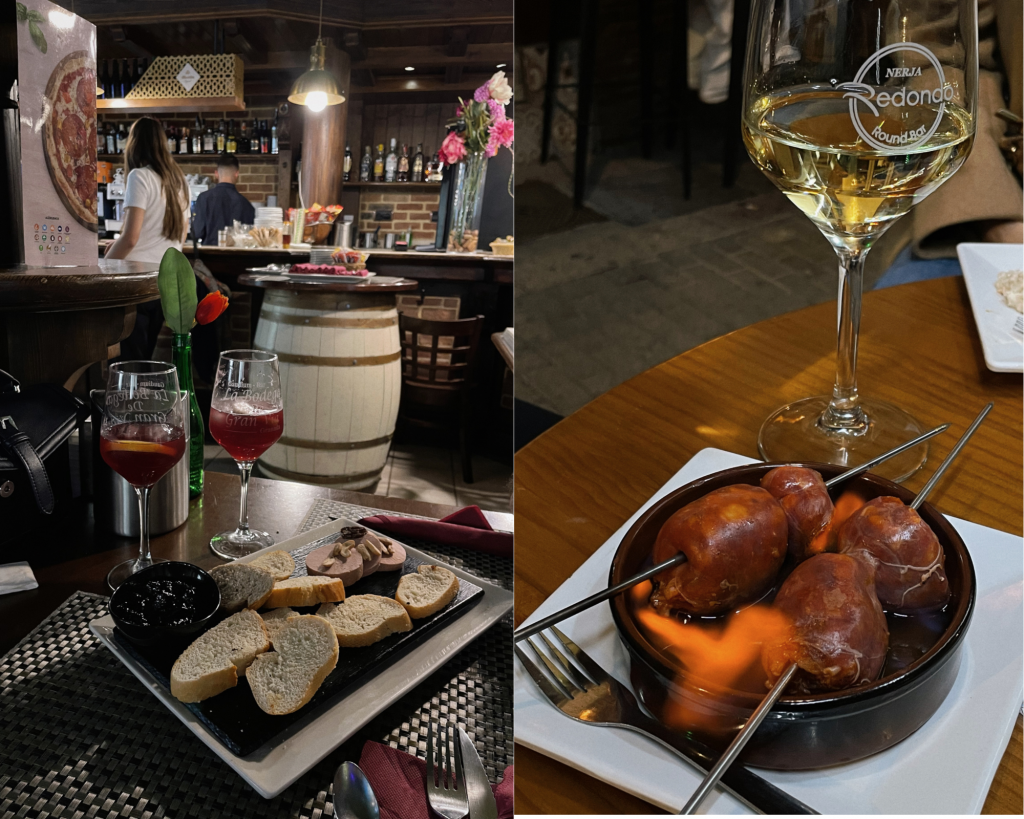
It’s funny how that olive set off an adventure into Spanish cuisine when it was the last thing I was expecting. 🫒 I’m excited to dive deeper into the local produce, explore quality seasonal foods, and learn about the traditions and culture behind them. I can’t wait to share those discoveries with you, along with some authentic recipes.
💌 Today’s Note:
Never overlook the small things; they might just change everything.
